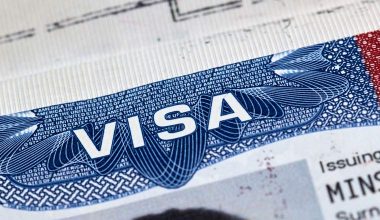The Modern Language Association (MLA) is the group in charge of creating the MLA format. It was created as a way for researchers, students, and academics working in the domains of literature and language to style their papers and assignments in a consistent manner.
This strategy of producing a paper or assignment in a regular, or consistent, manner enables easy reading.
This article is a full guide on how to write MLA citations. This page covers the information from the 9th version of the manual.
A section on how to make an MLA header is also included below. These headers show at the top of each page of your project. Check with your instructor to see if they prefer a certain MLA header structure.
Read on!
What exactly is MLA?
The Modern Language Association (MLA) is a non-profit organization dedicated to language and literature.
When writing a project or research, your lecturer may ask you to reference your sources in MLA style depending on the topic area of your class or research.
Following the Modern Language Association’s norms, this is a specific way to cite. Other citation styles, such as APA and Chicago, are also popular, but MLA is most commonly used in literature, language, liberal arts, and other humanities disciplines. This guide discusses this format in-depth but is unaffiliated with the organization.
What is MLA Citation
The 9th edition of the Modern Language Association Handbook standardizes the way scholars document their sources and format their works.
It is straightforward to detect and comprehend the types of sources utilized for a project when everyone documents their sources and papers in the same way.
However, readers of your work will examine your citations not only to comprehend them but also to investigate them further.
On a general note, it’s critical to give credit to the original author when you borrow information from a source and use it in your study or project.
This is accomplished by using an MLA citation. Citations may be included in the body of your project and in a works-cited list at the conclusion, depending on the type of material you’re including.
How Do I Use It?
For MLA citations, the 9th edition is the most recent and updated version. The citation format, which was released in April 2021, changes slightly from earlier versions.
This update comes after the 8th edition’s 2016 update, which included numerous substantial modifications from earlier versions.
The most significant change in the 8th edition was the adoption of a single standard format for all source types.
In previous editions, academics had to look up the citation format for the material they were using. Books, websites, journals, and other materials came in a variety of formats.
After 2016, scholars could spend less time looking for the right format to cite their sources and more time on their study by using a single universal MLA citation format.
The addition of “containers” was another update. A container contains information about a work that is part of a bigger work.
Books, for example, have chapters, albums have songs, and journals have journal articles. The source is the bigger work, such as a website, while the container is the smaller work within that source, such as a website short story.

DOIs or URLs are increasingly encouraged in MLA citations. When a DOI is available, use it instead of a URL. You can normally leave out http:// or https:// from URLs unless you intend to hyperlink them, according to the MLA 9th edition. Use http:// or https:// before the DOI in DOIs: https://doi.org/xx.xxxx/xxx.xxxx.xxxxxxxxxx
Authors’ true names can be replaced with pseudonyms and usernames on social media. The abbreviations for volume and issue numbers are now “vol.” and “no.” Citations no longer identify the source’s city of publication or media (such as print or web).
With the terms “university” or “press,” shorten “university” to “U” and “press” to “P” for academic presses/publishers (Cambridge UP). When using seasons in the date field of a reference, use lowercase letters (spring 2021 not Spring 2021).
How to Organize MLA Format
The following is an overview of how to format an MLA document.
#1. Margin:
Except when an article includes a running head, an MLA paper should contain a one-inch margin on all sides.
#2. Text formatting:
It is recommended that you select Times New Roman font size 12 because it is considered one of the most correct writing styles. At the right margin, avoid justifying the text. Make sure that all the article’s parts, including quotations and works cited, are double-spaced. Keep in mind that the opening lines of paragraphs and blocks of quotes are half an inch indented from the left margin.
#3. Heading and title in MLA format:
Your name, your professor’s name, the course code, and the date appear in the heading. The above information should be one inch from the top of the first page and aligned with the left margin. Also, the paper’s title is not capitalized, bolded, or enclosed in quotation marks.
#4. Head of the line:
Page numbers should be half an inch from the top and aligned with the right margin in the right-hand corner. Before writing the page number, make sure your last name is entered, followed by a space. It’s important to note that you shouldn’t use any punctuation before the page number.
On all pages, the running head, your last name, and the page number will show automatically. It’s important to remember that some teachers don’t allow running heads on the first page, so follow any instructions carefully.
#5. Bibliographical References:
The list of works referenced should be included at the end of the article but on a different page. It’s worth noting that the reference list, like the body content, has a running head. The title “work cited” should be centered on the page, an inch from the top.
Indent the subsequent lines half an inch from the left margin if an entry in the work mentioned includes more than one line. Make sure your list is double-spaced.
#6. Tables:
Tables and graphics should be placed near the text to which they are related. The table should be labeled with the word ‘Table,’ followed by an Arabic numeral.
#7. Illustrations:
Moreover, if you are using an illustration/figure, label it ‘Figure’ and assign it an Arabic numeral. Note that the label and the title should appear below the chart and with a one-inch margin. If the information regarding the source is not cited in the text, don’t include its details in the work cited. The figure below shows how you should label an illustration.
Step-to-step Guide on How to Write in MLA Format
The MLA style formatting requirements are, in general, adaptable. That is why many professors and students prefer to adopt this writing style for their research papers in middle school, high school, and college.
While MLA is flexible, there are a few formatting standards that students must follow. The following is a basic breakdown of how to format an MLA paper:
- Use regular white 8.5 x 11 paper.
- Keeping track of your pages
- A one-inch margin (all sides)
- Font that is easy to read
- Double-spaced
- New paragraphs should be indented.
- Between sentences, there is only one space.
Now that you’ve mastered the fundamentals, you can focus on the many formatting elements you’ll need for your cover page, headings, headers, text formatting, and tables.
1. Cover Page in MLA Format
A cover page is not usually included in MLA papers. However, if a teacher requests one, you must know how to make one. The following items are included on an MLA cover page:
- Name of the university or school
- The paper’s title
- If you have one, include it in the subtitle.
- Your given name
- If you require it, the name and number of the course.
- Professor/teacher
- The deadline
That’s all there is to it. On your cover page, everything is in the center. The top of the page has the name of the institution or university, with the title in the middle. Near the bottom, you’ll find your name, course, professor, and due date.
2. Headings and Headers in MLA
Your paper usually has a heading and title on the first page of your work, rather than a cover page. Your name, instructor, course, and date are all aligned to the left in your MLA heading and title.
Before you begin writing the body of your paper, make sure the title is in the center. A running header containing your name and the page number, as well as the works cited, appears on each page of your paper.
3. Text and Body Formatting in MLA
MLA provides recommendations for typefaces, spacing, formatting, numerals, and abbreviations throughout the body of your work.
4. MLA Paper Formatting: Use a Font That Is Easy to Read
When drafting your paper, you’ll want to use a readable font. Your teacher does not wish to examine your work with a magnifying glass.
To ensure this, MLA suggests using a font like Arial or Times New Roman that is easy to read and separates regular and italicized text.
Also, select conventional font size, such as 11 or 12 points. Using a 14-point font for everything does not make your paper appear longer.
5. Formatting and Spacing for an MLA Paper
When it comes to your paper’s spacing and formatting, use double-spacing throughout the body and works cited sections, and make sure your text is left-justified with a ragged edge on the right margin.
It’s also critical to use the tab key on your keyboard to indent each new paragraph five spaces. Follow the normal punctuation rules for commas and periods to make everything neat and orderly.
6. Numbers in MLA format Formatting
It’s not difficult to use numbers in MLA, but there are a few guidelines to follow. When to use Arabic and Roman numerals, when to spell out numbers, and when to just use the Arabic version, according to MLA.
If you can spell a number in a few words, for example, go for it. If you require a whole statement, though, Arabic numerals like 1,345,267 are preferable. It’s possible that writing that one hurts your fingertips.
Examples of Numbers
- 129, 879, 3 ¾
- million ten, twenty-six, two million
MLA Formatting Abbreviations
You can utilize abbreviations in MLA formatting to save your fingers from cramping. Abbreviations, like everything else, must adhere to certain laws.
Abbreviations that end in a lowercase letter, for example, should be followed by a period, and months that are longer than four characters should be abbreviated.
Example of an Abbreviation: Dec, May, ACL,
Read this: Tips on how to study for finals | College & High School
Tables and Illustrations in MLA Format
Tables and graphics are other important aspects of the MLA paper style. They not only provide color to your work, but they also allow you to demonstrate rather than read certain elements. When it comes to tables and figures, stick to MLA style requirements and put the figure as close to the text as possible.
In MLA, how to format a table
- In your MLA document, formatting a table is simple. You are also free to include as many as you wish. Just remember to follow these formatting guidelines.
- The label “Table,” followed by an Arabic numeral, is flush left. (Table 1) In the title case, the title is flush left under Table. (The number of COVID cases in the United States)
- Provide the table’s source directly beneath the table. It should be flush left with a dangling indent for information that will be placed on a second line. In addition, all the data should be double spaced.
- Separate the source from the table using a dividing line.
MLA Papers with Figures
It’s now time to consider MLA figure formatting. For art and language papers, the MLA format is ideal. As a result, photographs, graphics, and maps may play a significant role in your work. In MLA, formatting a picture is comparable to formatting a table, however, there are a few differences.
- The label “Fig.” is placed exactly beneath the image, followed by an Arabic numeral. (See Figure 1)
- The caption will be right next to the label. (See Figure 1 for a map of Scotland.)
- The source information can be included in the caption, but it does not need to be referenced in the text.
Musical pictures follow the same principles as figures, with the exception that they are labeled as an example (Ex. 1).
You’re all set with MLA Paper Format Made Simple Preparation! You are totally equipped to set up your work with ease now that you have MLA paper formatting information. Now it’s time to write!
FAQ How to Write in MLA Format: Step-by-Step Instructions
You’ll need a running header with your last name and page number, 1-inch margins on all sides, indents when starting a new paragraph, and a readable font to create a paper in MLA format. You’ll also use MLA format citations to cite your sources in-text and on your works cited page.
Every page in an MLA document has a consistent style, including 1-inch margins, a readable font, a running header with your last name and page number, and in-text citations from the author’s page. You’ll include a work cited page at the end of your paper with a list of all the sources you utilized.
To produce an MLA research paper, you must follow the Modern Language Association’s rules. As a result, scholarly resources cited utilizing author-date in-text citations must be included. Include a works referenced page at the end of your paper that lists all of your scholarly references. Use 1-inch margins, a readable font, indents for new paragraphs, and a running header when formatting your document.
Include a right-aligned running header in MLA format to correctly head a paper. The page number and your name are included in your running header.
To set up the 1-inch margins, double spacing, and running header for your MLA document, use a word processing software to construct an MLA style template. You can easily do this by following the MLA page layout standards for these sections.
Reference
- https://www.google.com/url?q=https://www.easybib.com/guides/citation-guides/mla-format/&sa=U&ved=2ahUKEwizyau2y-rzAhXvDmMBHfzDAvsQFXoECAAQBA&usg=AOvVaw2VlND212JNWrkPmnkGfBaQ
- https://www.google.com/url?q=https://www.scribbr.com/mla/header/&sa=U&ved=2ahUKEwizyau2y-rzAhXvDmMBHfzDAvsQFXoECAUQBg&usg=AOvVaw2JanivKMUYs5c8sZWuIIs9
- https://www.google.com/url?q=https://jerz.setonhill.edu/writing/academic1/mla-style-papers/&sa=U&ved=2ahUKEwizyau2y-rzAhXvDmMBHfzDAvsQFnoECAMQAg&usg=AOvVaw2o0qO5iC8PY_8GazDSxYaF





